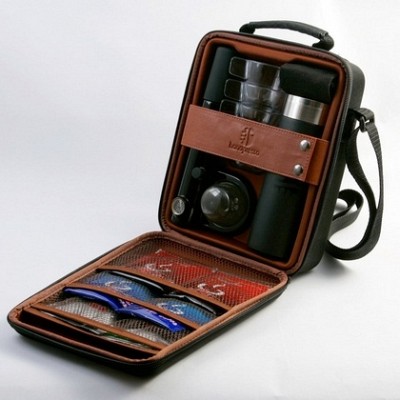If your cat dislikes traveling, then car trips are filled with blood-curdling cries of misery until you arrive at your destination. Perhaps you already have some experience taking your cat on the road.
This time, it's more than just a short trip to the vet or just a neighborhood stroll. Your journey could be significantly longer, taking you across the nation or even to the peaks where you'll be camping.
There are some things you should be aware of and ready for if you plan to drive a long distance with your cat. Discover how to prepare for a long trip with your cat by taking a peek.
-
Drawing a Plan
There are some things you should plan out before commencing a trip. The next thing is to ensure that you have all the necessary materials with you when you travel with your cat after choosing your destination.
You wonder what this entails. Anything you would require to maintain the health and safety of your cat. Based on the destination, things you might need include food, snacks, a cat carrier, and numerous other necessities for you and your cat to enjoy a safe journey. You can do some research and can also visit this website for more knowledge on cat food and snacks.
-
Get your Cat Used to the Car
Start out simply by starting the car and letting it idle to watch how your cat reacts to the new sounds. See if playing some music would help it relax or if it will make things worse.
You can go for a quick walk around the neighborhood after your cat feels at ease to see how it reacts. You'll be more informed about what to expect on lengthier car rides if it exhibits heightened symptoms of anxiousness or motion sickness.
-
Things to Keep
A cat carrier is the primary equipment you'll need for long journeys. The next item you must include is a cat collar and a leash of some sort.
This is what you'll need if you do not wish to have your cat confined to a cage the entire time. Everywhere you go your cat will be safe with a collar and leash.
Don’t skip a litter box. It is the last thing you would want to forget. An ideal case scenario would be to have a litter box that fits inside the carrier. However, if that is not the case then you will have to keep it separate and allow your cat to empty its bladder from time to time.
Sedation is generally preferable if you are certain that your cat won’t calm down. It will be significantly easier for the two of you if you sedate the cat before leaving.
Don't overlook comforting objects from home, such as blankets and toys. Additionally, carrying familiar items from the household will keep the cat relaxed. It's not the thing itself that will relax your cat.
The aroma of the object you carry will assist your cat behave because it is a known scent. Don't forget to pack a leash with his identification tag on it in case it gets lost. Some collars are equipped with GPS trackers, however they can be quite expensive.
-
Ensure that your Cat is accustomed to a Cat Carrier
How long it takes the cat to become used to it depends on the cat specie you have. Some cats genuinely like to travel and can readily acclimatize to it. Here are some suggestions to assist ease your cat into it if it does not appreciate it.
Make sure you keep the door open and the cat carrier in clear sight when you first buy it. Put your furry friend inside it afterwards. We want to adapt them to it gradually.
They'll probably start investigating it out of curiosity. That is typical. Once they understand there is no danger, your cat will ultimately venture within the carrier. You can start putting your cat in a car with the carrier when it feels secure doing so.
-
Remember Vehicle Safety
All doors should be kept locked, and they shouldn't be opened until your cat is restrained in a carrier or by a collar. It can be extremely risky to open a car door with your cat running around inside.
This is among the most common reasons cats go missing while traveling. Most likely, your cat won't know where it is and won't be able to navigate its way back to either you or the automobile.
It would be wise to carry a GPS tracker in a collar as mentioned earlier in the post. In case something like this happens, you would be able to locate the cat.
Conclusion
Long-distance commute with a cat need not be challenging. Everything should go according to plan if you do thorough research and follow the appropriate safety measures.
You shouldn't take a cat's transportation needs lightly. Before venturing out, be mindful about getting the right training and equipment.





































